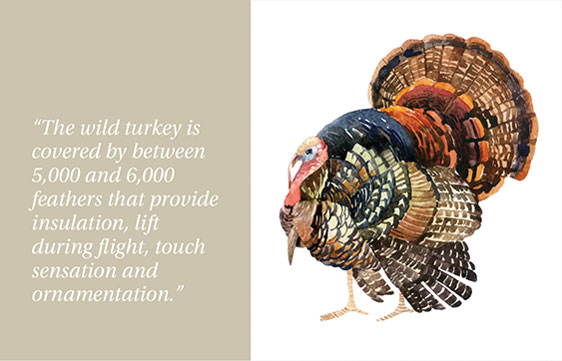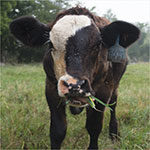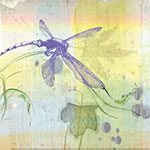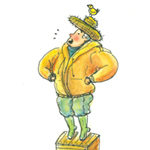
The road back from extinction in Ontario
WITH THANKSGIVING JUST AROUND THE CORNER, the local domestic turkey population must be gobbling with envy at their distant cousins, the eastern wild turkeys – the branch of the family that wander freely throughout the countryside and strut out of the ditch, onto the road in front of your car. But the eastern wild turkeys haven’t always had an easy go of it. Once considered native to Ontario, they were hunted to extinction in the 1800s. The last native wild turkey in Ontario was recorded in the 1900s.
Fast forward to the 1980s when Ministry of Natural Resources embarked on a wildlife exchange program with the United States to reintroduce the wild turkey in Ontario. The province traded river otters, partridge, geese and even moose in return for 274 wild turkeys that were released in the Trenton, Cambridge, Huronia and Simcoe areas. Today, the estimated 100,000 turkeys that call Ontario home, are all descendants of those original 274 turkeys that were released 34 years ago.
The ideal habitat for the wild turkey is a mixed hardwood forest where it forages on the forest floor for nuts, berries and insects and where it roosts in the hardwoods and seeks out protection from the winter wind in the hemlocks and pines. Turkeys also go beyond the forest in search of food in the understorey of low bushes such as alders, sumac, dogwood and hawthorn. When winter food is scarce, the turkey scratches through the snow and ice with its long talons for grass seeds.
Female turkeys, referred to as hens, nest in woodlands, on the edges of fields and in clearings and thickets – anywhere that a natural depression can be found that is near water and the breeding ground. The low plant cover of these areas protects the chicks and provides them with a concentration of insects.
Male turkeys, known as gobblers or toms, are recognizable by their beards, wattles, leg spurs and their magnificent fan of feathers. In the spring, the toms stake out their breeding territory and the ritual courtship begins with the toms’ gobbling, wing-dragging and tail-fanning behaviour.
And if you are wondering how the wild turkey compares to the domestic turkey in taste, its meat is darker and drier, with a “gamier” flavour that reflects the foraging habits of the bird.
“The wild turkey is covered by between 5,000 and 6,000 feathers that provide insulation, lift during flight, touch sensation and ornamentation.”
Story by:
John Napes




